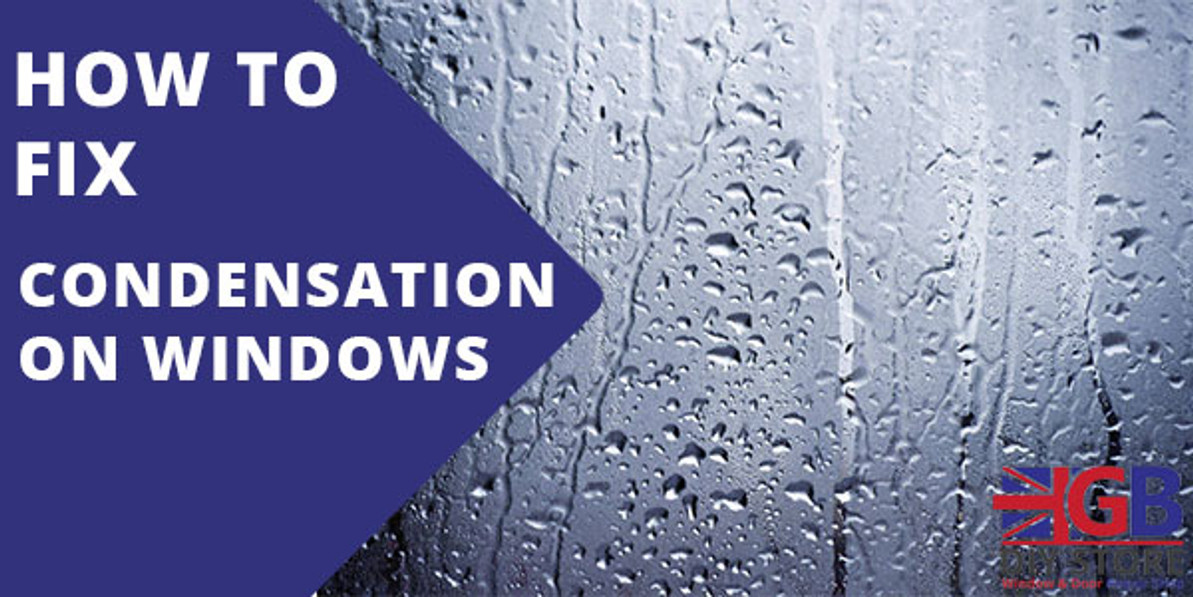Condensation On Windows - How to Fix It
Condensation on windows is an unfortunate side effect of winter weather. It's something that causes problems for almost everyone and not just on our home windows either. You will find condensation on bathroom mirrors and even on your car windows when you're in a desperate rush first thing in the morning. In this blog post we're going to go through how this happens and what you can do to fix it. Let's dive right in.
What causes condensation?
So what causes condensation on windows? The simple answer is the cold winter weather causes warm, moisture filled air to stick to cold surfaces and turn into water.

The not so simple answer requires a bit of a science lesson. Condensation is caused when warm and damp air lands and sticks onto a cold surface. The glass units in your windows and doors are cold due to the cold weather outside. On the inside you turn up your heating which causes the air in your home to become warmer. You bring your washing inside to dry on your radiators and this in turn releases excess moisture in to the air. When warm damp air lands on your windows it forms water droplets.
There is a great and simple experiment you can do to see this happening yourself. Go up to your cold window and breath directly onto it. Your warm breath which is full of moisture will immediately condensate and steam up on the glass. So don't be surprised when you wake up in the morning and your windows have water droplets forming on them. Human beings give off huge amounts of moisture so sleeping in a room all night with no ventilation will add to your condensation issues.
All of these things combined add to your condensation problems. Luckily we have a few tips which can help reduce condensation on your windows!
How to reduce condensation
The steps to reducing condensation are extremely simple. You need to increase airflow by adequately ventilating your room and reduce moisture levels.
To increase airflow you can install trickle vents. This is one of the most effective ways of allowing clean air to flow around your window. It will enable the warm damp air around your window to escape outside and prevent it from sticking to your window. Overall this will reduce the amount of condensation. At GB DIY Store we sell a range of trickle vents to help reduce condensation. You can view these here.
Another fantastic way to reduce condensation on your windows would be to open a window. Most windows have a night latch function where it allows you to lock your window with a slight crack in the opening. This will provide a great amount of airflow and significantly reduce the amount of condensation.
How to reduce moisture in your home
Let's take a look at how we can remove moisture from your home. If you use these tips in combination with some airflow you can stop condensation in its tracks.
Try not to drape curtains over your radiators. If you have long curtains which cover your radiator, this will be trapping warm air against your window. Open the curtains slightly or tuck them behind the radiator.
Another way to reduce moisture would be to not dry as much washing on the radiators inside your home. This creates an incredible amount of moisture which will only add to the problem. If you have access to one try and use a tumble dryer which vents the moisture outside.
Why it’s important to reduce condensation
It's vital that you reduce condensation in your home. If excessive condensation problems are left for too long it can cause mould to form around your windows.
Mould is unsightly and a real pain to clear up when it starts to form. It usually requires special treatment or even redecorating. Mould can also have serious adverse effects on your health, especially young children.
Cleaning condensation from windows
Although these tips may have drastically helped reduce condensation, you may find small amounts still remain. It’s important that you regularly clear the condensation to stop it developing in to mould. You can do this easily with a towel or cloth.
Hopefully these few tips will help you reduce the condensation in your home. As always, if you need any assistance, please don’t hesitate to contact us by email, phone or Facebook.
Recent Posts
-
Home Ventilation: UK Guide for Homeowners and DIYers
Good ventilation isn't just ‘fresh air’, it’s much more. Ventilating your home mea …1st Jul 2025 -
Mind the Gap: Understanding the UK's DIY Skills Shortage
With more and more of us focusing on digital interests, more Brits than ever are reaching for their …28th May 2025 -
Noise Reducing Trickle Vents: RW Simon Acoustic Trickle Vent
Living in a busy area has its perks, but the constant noise? Not so much. Traffic, sirens, construct …17th Feb 2025




